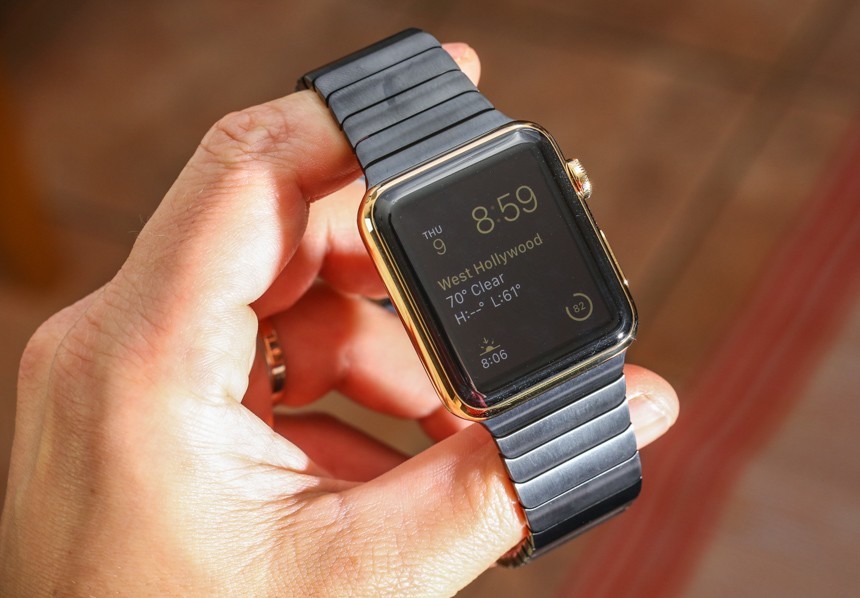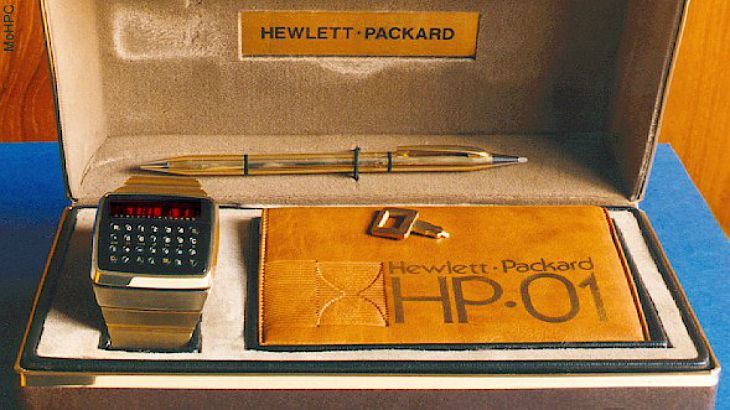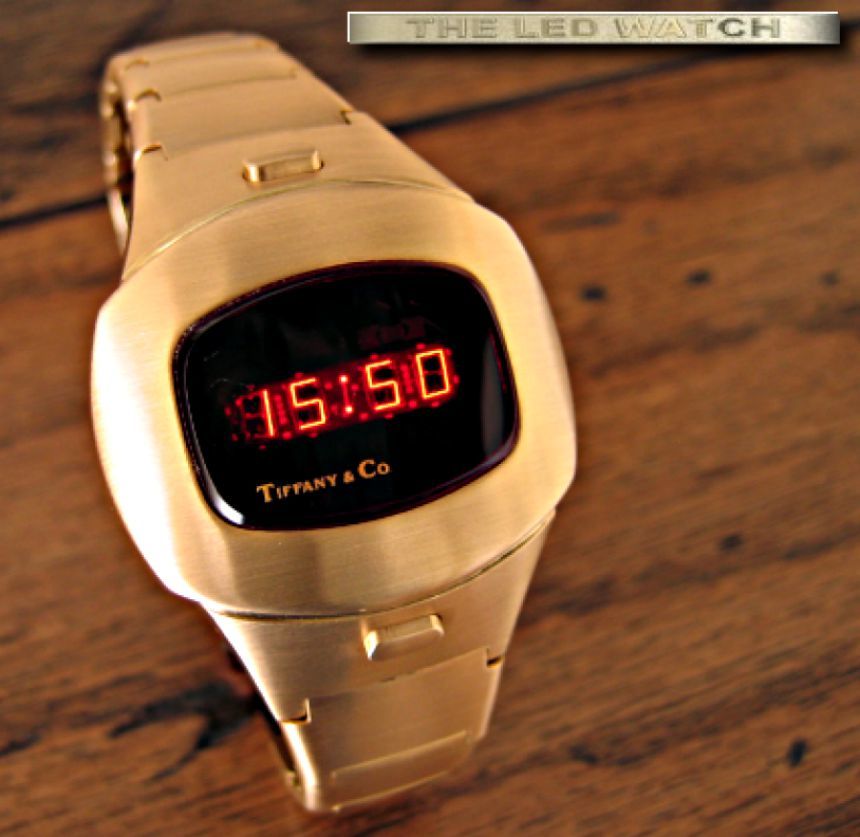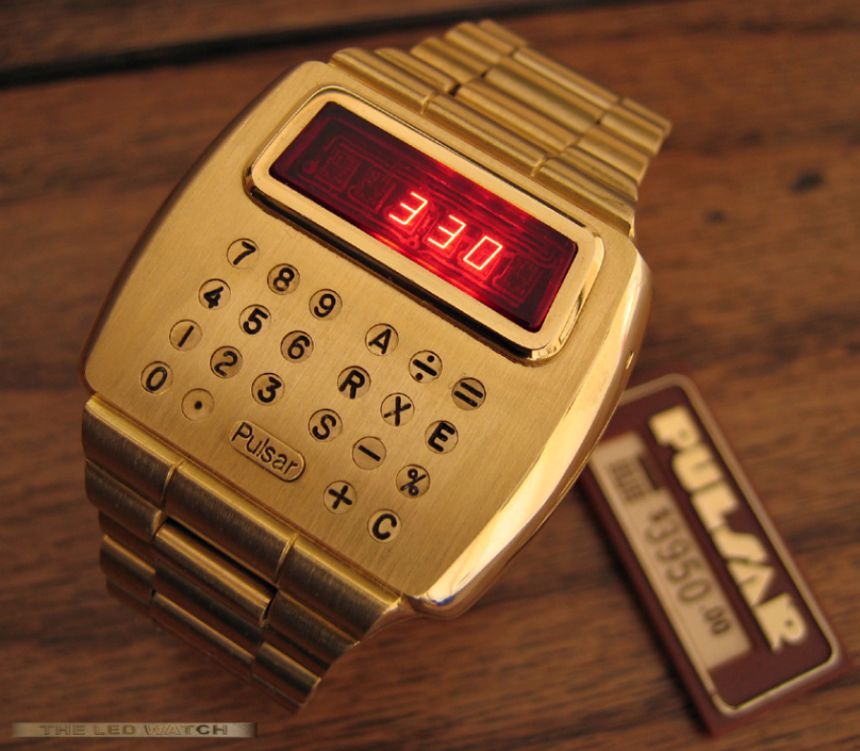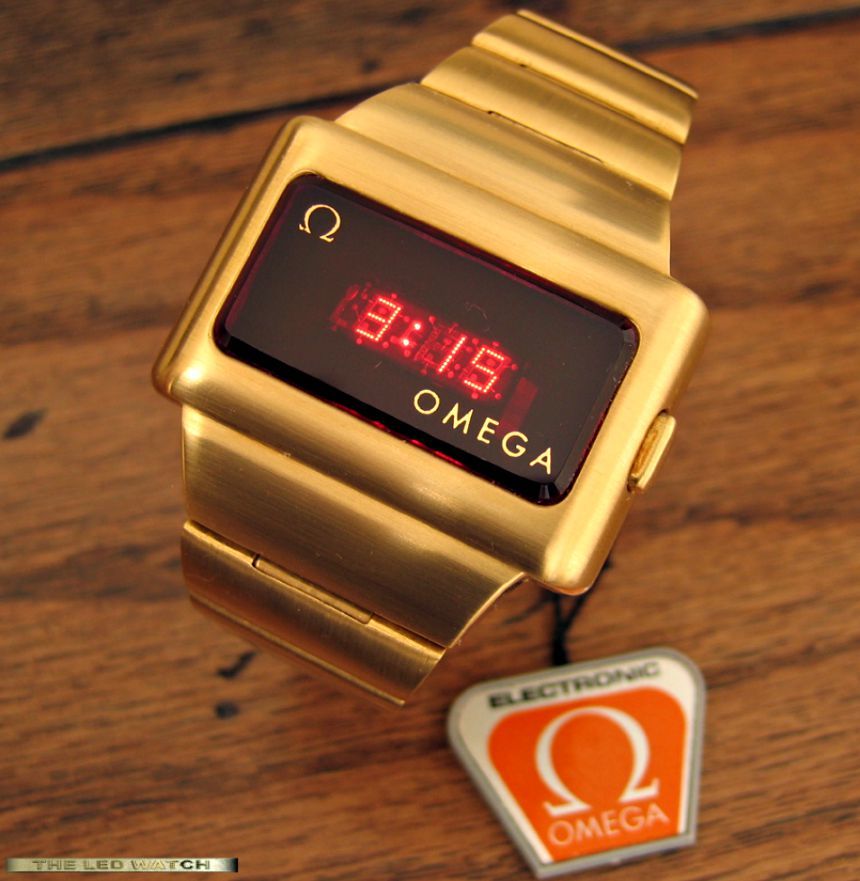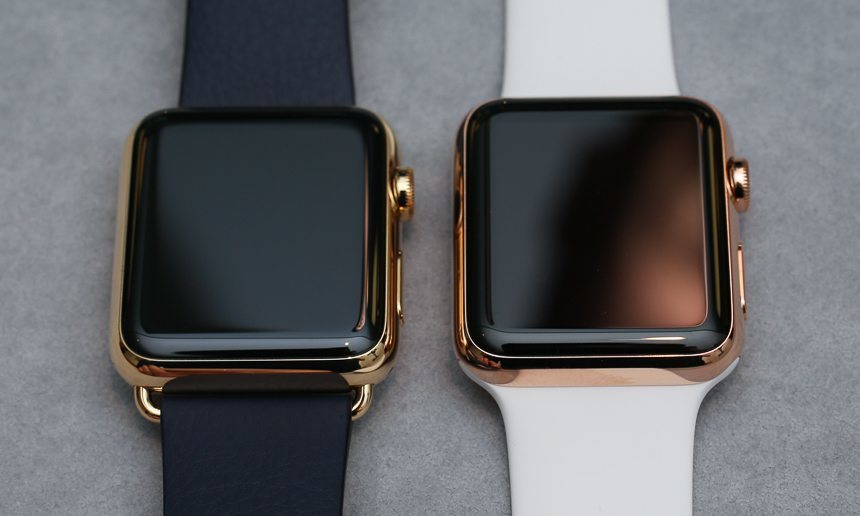
The Apple Watch Edition is Apple’s 18k gold version of the Apple Watch, and I had an interesting opportunity to wear one for review, think a whole lot about it, and then take it to the heart of Swiss watchmaking country to see what the locals felt about it.
I’ve written a lot about the Apple Watch because, frankly, I think there is a lot to say. This product is a mixture of luxury watch universe elements and wearable technology concepts. Together, this makes for a unique item that also happens to have a unique wearing experience. My goal is to muse on the conversations I’ve had about this product and what it represents to both the luxury watch and consumer electronics worlds. While smartwatches are still new, my sincere belief is that they will be a huge category in the not-so-distant future. I also feel that smartwatches will exist respectfully along side the world of traditional watches (without destroying it).
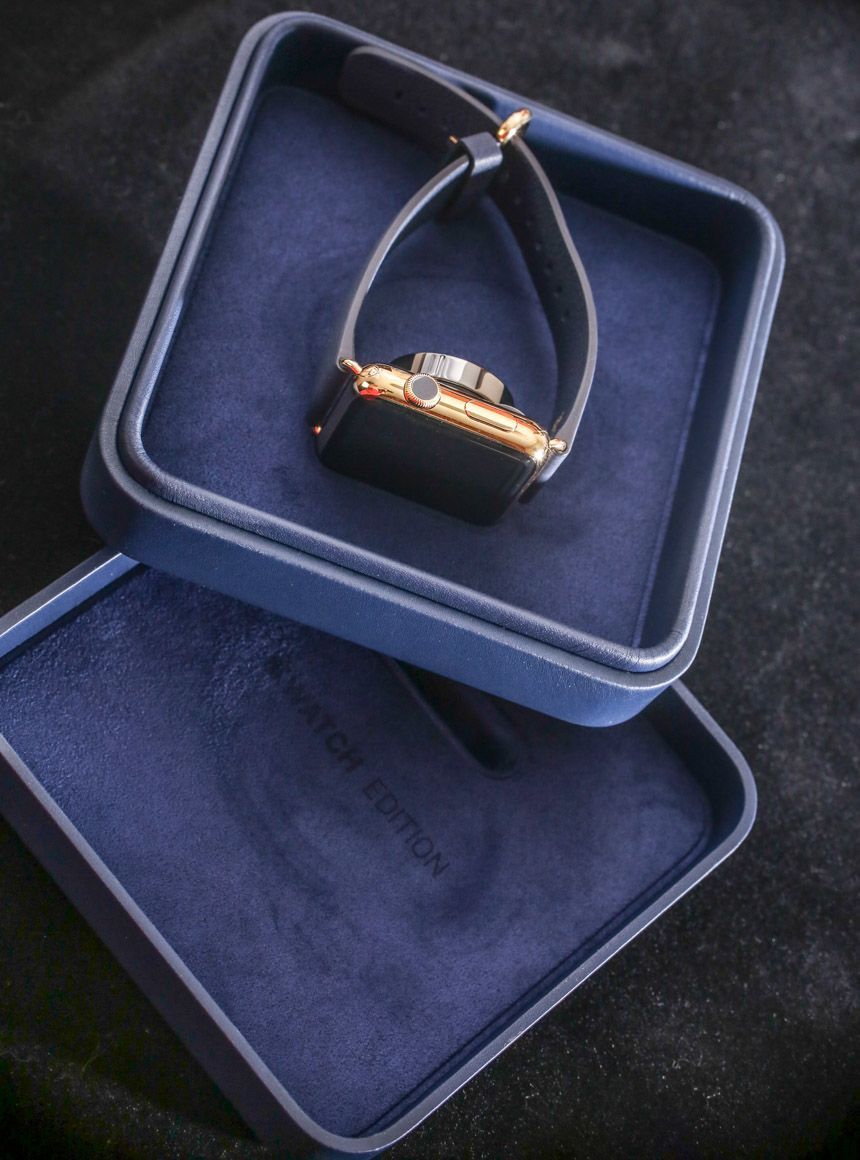
One of the most important things in this article is an illustration of where the idea for a gold “smartwatch” came from. This isn’t at all a new concept, and it is my belief that Apple was probably inspired by a series of innovative watches in gold that I would personally consider Apple Watch ancestors. Being aware of the history of companies producing gold versions of innovative electronic watches really does help put the Apple Watch Edition into a more grounded perspective.
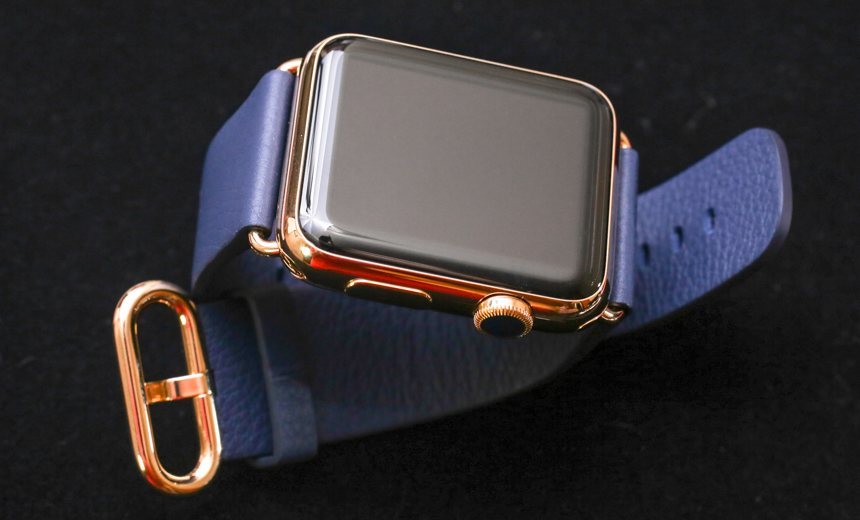
The Apple Watch Edition is also something that merges worlds that are in many historical and contemporary aspects not compatible. What happens, for instance, when you combine the notion of buying something meant to last for many years with the knowledge that what you are using is just one step in a rapidly evolving ecosystem in which you are along for the ride? What I mean, of course, is the apparent contradiction between the fact that luxury products often evoke of sense of timelessness that allows consumers to feel as though they are investing in an item that will be part of their lives for a while, and the fact that many of today’s technology products are replaced with more modern and powerful products 1-2 years after their release.
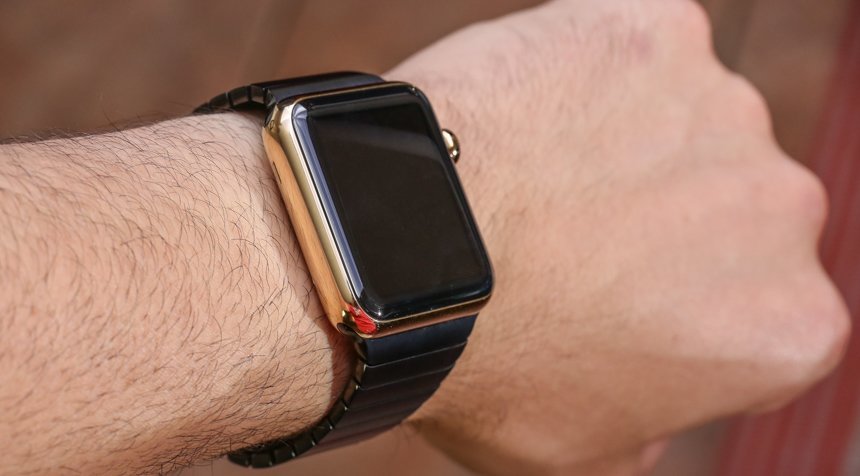
While you can make a lot of arguments that most versions of the Apple Watch do not exist within the luxury space (and merely exist as technology products), such arguments fail when it comes to the Apple Watch Edition – which is Apple’s much more exclusive version of the Apple Watch produced from either 18k yellow or rose gold. I’ve been wearing the 42mm Apple Watch Edition in 18k yellow gold for a while, and I have to be honest: it has been an interesting trip. While spending time talking about that experience, I also want to continue trying to frame the Apple Watch Edition in its historical as well as contemporary context, a context that few people seem to discuss with a lot of knowledge.
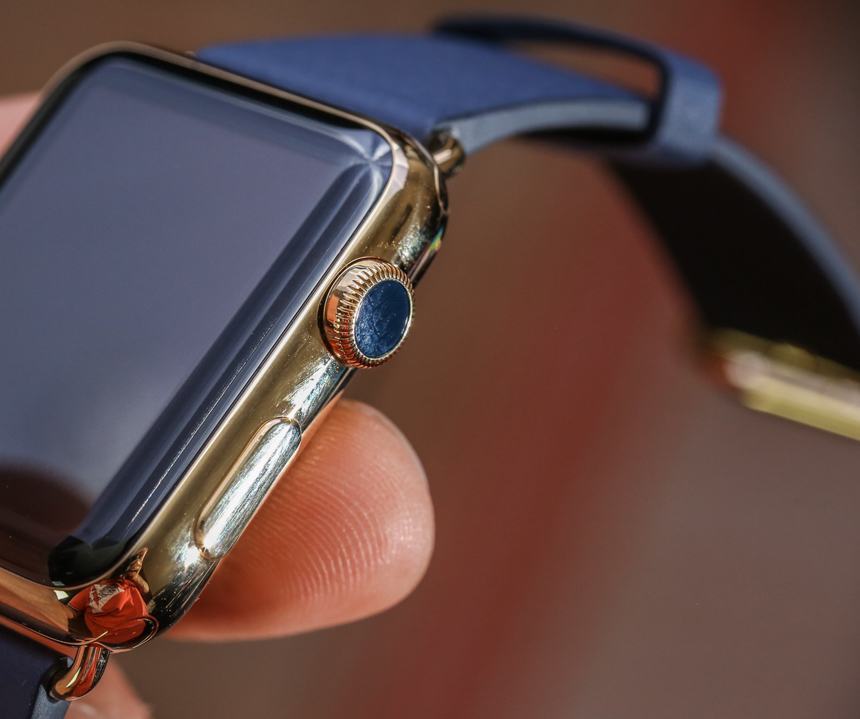
It is impossible to discuss anything Apple produces without at least mentioning some of the things others have said about them. From my vantage point, I’ve noticed that people have written far more skeptical things about the Apple Watch than pretty much any other modern Apple product. The tech journalism landscape is deeply opinionated and also deeply influential. Apple gets a lot more lip service than most technology brands, and that’s because of the company’s late great leader, Steve Jobs, as well as the company’s ability to capture the heart of mainstream consumers with technology products in ways that many other technology companies fail to do. Apple also happens to be an extremely rich company, and when a company is in such a position, it is often the target of criticism and speculation. It seems as though people are never more excited than to report on something negative about the company. This isn’t unique to Apple, and it is a common phenomenon when it comes to how certain portions of a population talk about leaders, leading companies, and leading products.
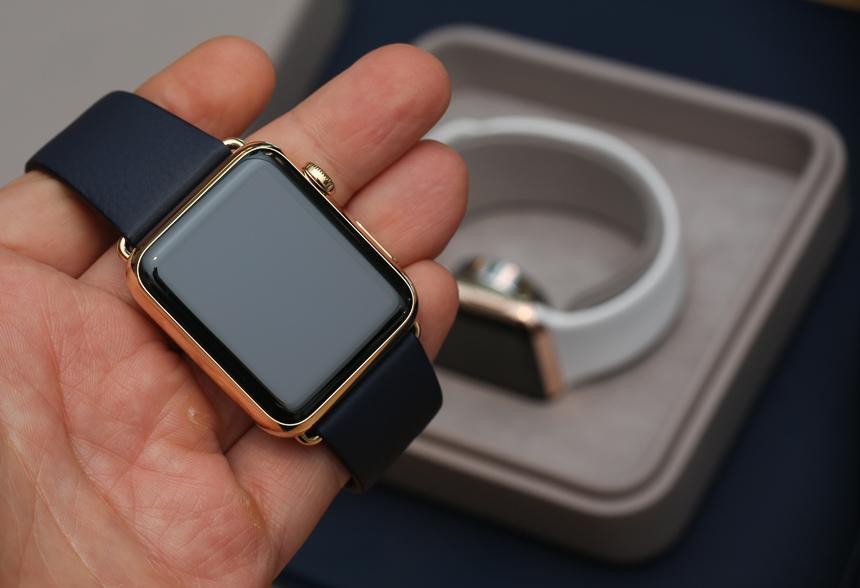
Few people outright pan the Apple Watch because, frankly, there isn’t too much bad to say about it – that is, if you understand the product, its limitations, and what Apple has been able to accomplish that no one else has. It does, however, seem that the Apple Watch causes a degree of cognitive dissonance among tech writers, and as a result, you see a lot of editorial which frankly comes across as someone being utterly confused about the Apple Watch. Trying to explain that confusion, it must mean that the Apple Watch did not live up to hype or that Apple somehow failed.
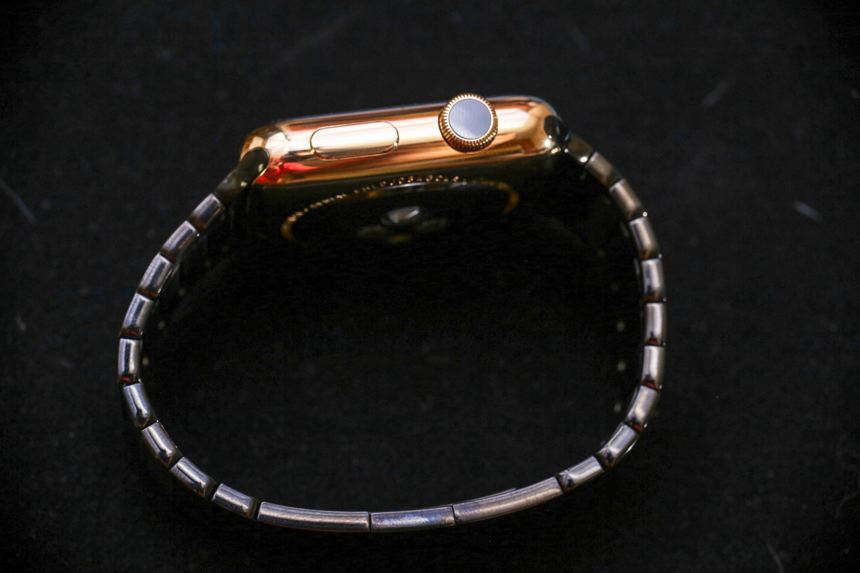
If tech writers are confused about the Apple Watch, then they are utterly dumbfounded by the Apple Watch Edition which is either ridiculed as totally unnecessary or simply not discussed in the context of the writing about the Apple Watch because people simply don’t know who Apple is aiming for as a target consuming demographic. I’ve spent more time speaking to mass media publications and journalists about the Apple Watch Edition than pretty much any single item I’ve ever written about. So who is the Apple Watch Edition for?
In answering that, I will stick to my original statement from months ago (when I wrote an article “All About The Apple Watch Edition”) that it is an Apple Watch for people accustomed to wearing a gold watch, who want to experience a wearable technology product without feeling as though they are having to make “lifestyle sacrifices.” That is true, but after wearing the Apple Watch Edition for a while, I’ve come to additional conclusions about who the Apple Watch Edition might be for (and who it most certainly is not for).
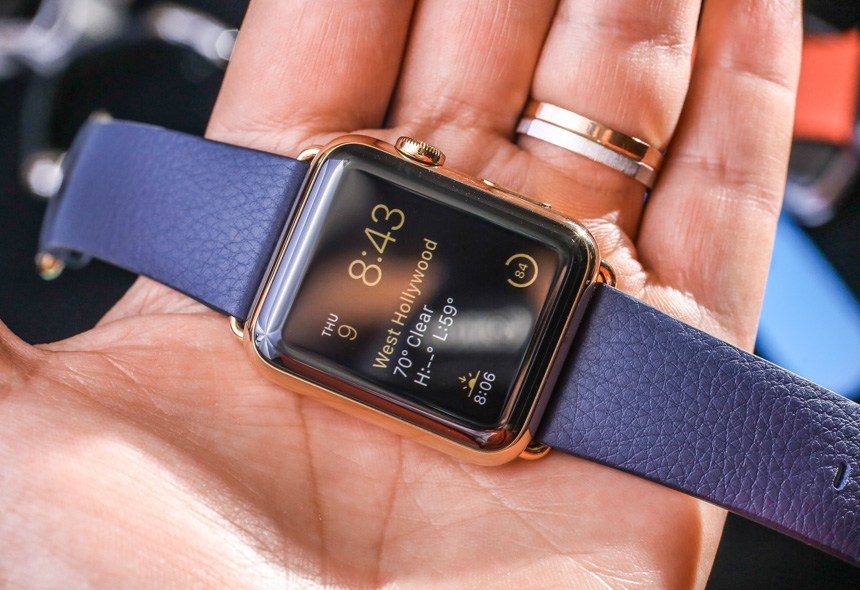
My personal stance on Apple is, if anything, relatively neutral. My first computer was an Apple, but I’ve since become a rather dedicated PC user. I tote around with me both an iPhone and an Android-based phone, and I never actually owned an iPod. I’m not an Apple fanboy, nor am I a resolute critic. I am, rather, someone who admires what the company has done, and views their products as being comprised of both products I do want, and products that don’t interest me.
So when the Apple Watch was debuted in September of 2014, I was given a unique opportunity to consider a product that was both a watch (a topic I’ve specialized in writing about since 2007), and a technology product (items that I’ve been fascinated by my entire life). Oddly enough, when Apple announced that they would be producing an Apple Watch from actual solid gold… I wasn’t that surprised.
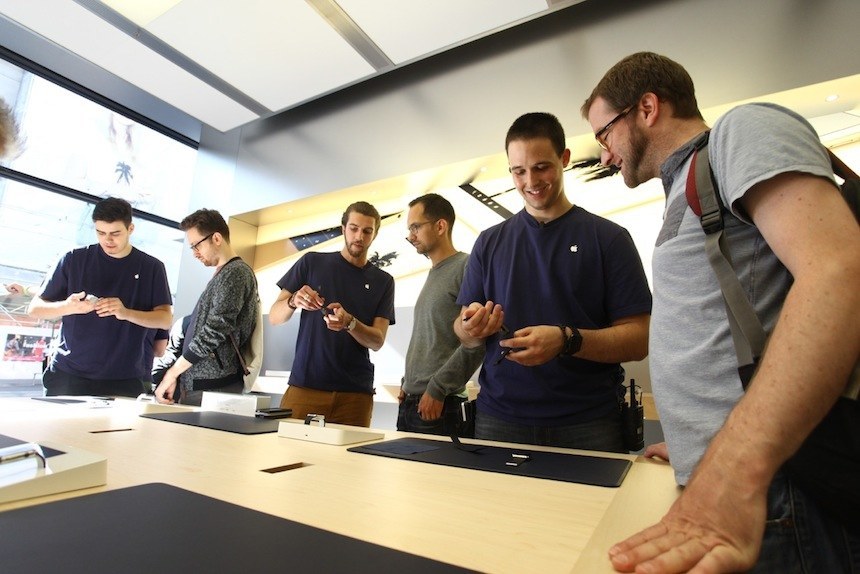
With that said, I will tell you who is quite surprised that Apple made a gold watch: mainstream consumers who simply don’t follow technology news enough to be aware of it. For a few years now, Apple has been producing iPhones and other products with gold-toned accents. My iPhone 6 Plus’s gold color isn’t, of course, real gold, so when I show people the Apple Watch Edition, they certainly don’t initially suspect that its case is actual gold.
While Apple news might be a big deal to many people, I find that mainstream consumers probably don’t spend as much time as tech enthusiasts keeping up to date on all the new products and versions of those products that Apple and other major consumer electronics companies come out with. Apple, of course, hasn’t promoted the Apple Watch Edition in advertisements that much (at least, not ads I’ve seen), so it follows that people don’t know too much about it.
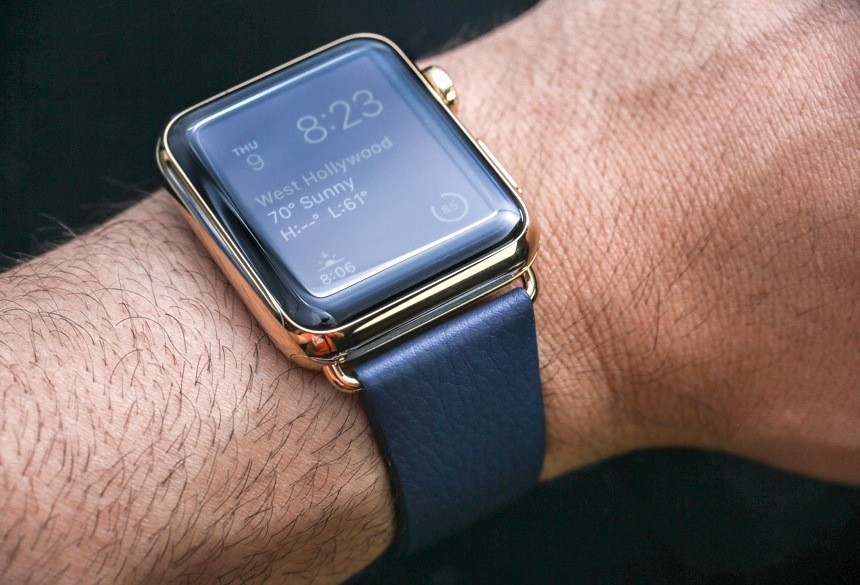
After people learn that Apple produces an 18k gold version of the Apple Watch, the next question is always “how much does it cost?” When I tell them that the one I am wearing costs $13,000, I’ve never experienced anyone get angry or confused. Perhaps, they felt a bit shocked, if anything at all. Some people simply thought it was “cool.” Of course, a lot of other people out there dislike the idea that a popular consumer electronics maker has suddenly out of seemingly nowhere produced a product specifically designed to be expensive for no other reason than to ensure most people can’t afford it. That is the purpose of gold products, isn’t it?
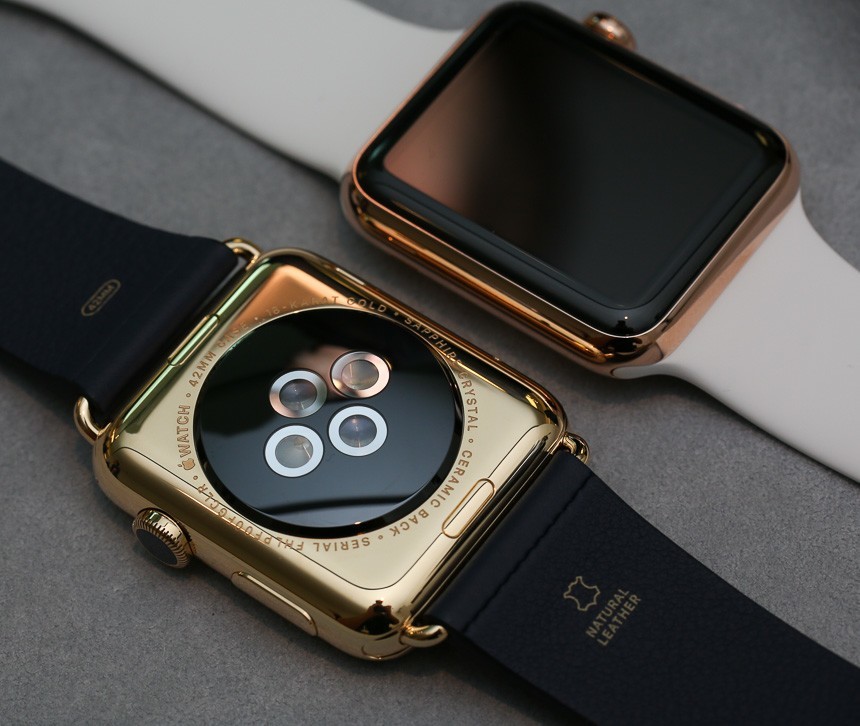
The value proposition for the Apple Watch Edition is very strange, I’ll admit that. You get virtually the same software and hardware experience as the Apple Watch or Apple Watch Sport. You don’t get increased performance or utility, but rather, merely the addition of more precious materials. So other than it being a clear status indicator or lifestyle affirmation tool, why would someone buy the Apple Watch Edition? Does the answer need to be more than “because they can?” When you ask people why they buy a luxury car, watch, suit, or whatever – no matter how complex their answer is, it all comes down to “because they wanted it.”
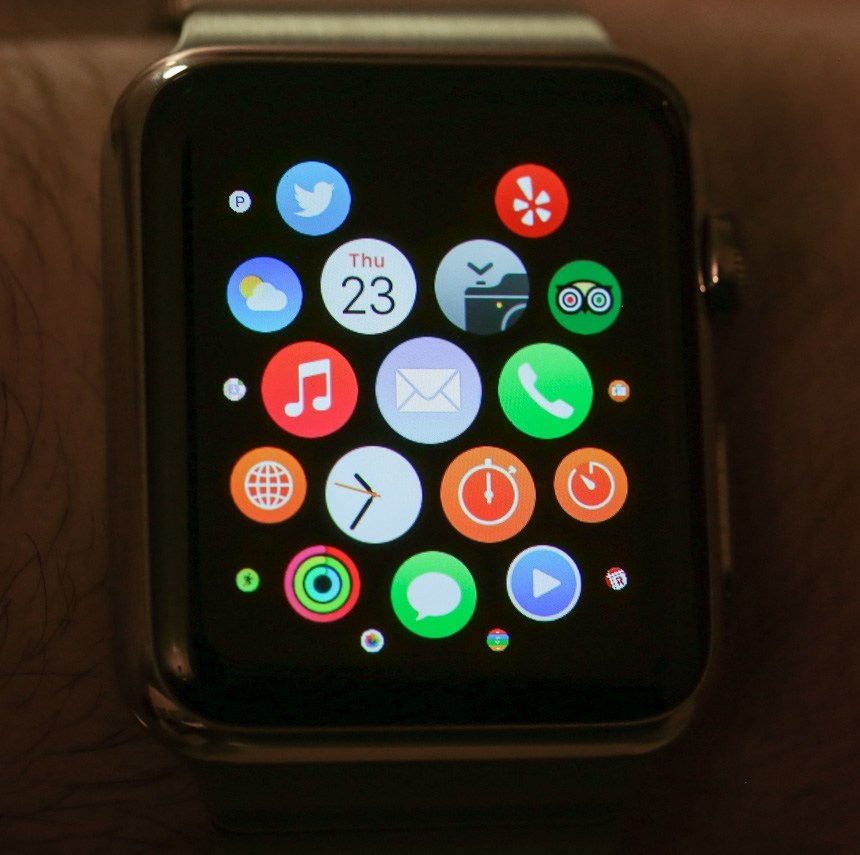
So we’ve established that no one needs the Apple Watch Edition. It can also be said that no one “needs” the Apple Watch or any other watch for that matter. Much of the criticism of the Apple Watch itself is that it simply doesn’t offer enough compelling functionality to sway enough consumers to buy one. Apple is now routinely judged on how much of something it sells versus how innovative or interesting their products are. If the Apple Watch were an ugly dud but it sold well, people might be praising it. That millions upon millions of consumers haven’t immediately jumped on something new isn’t exactly shocking to me.
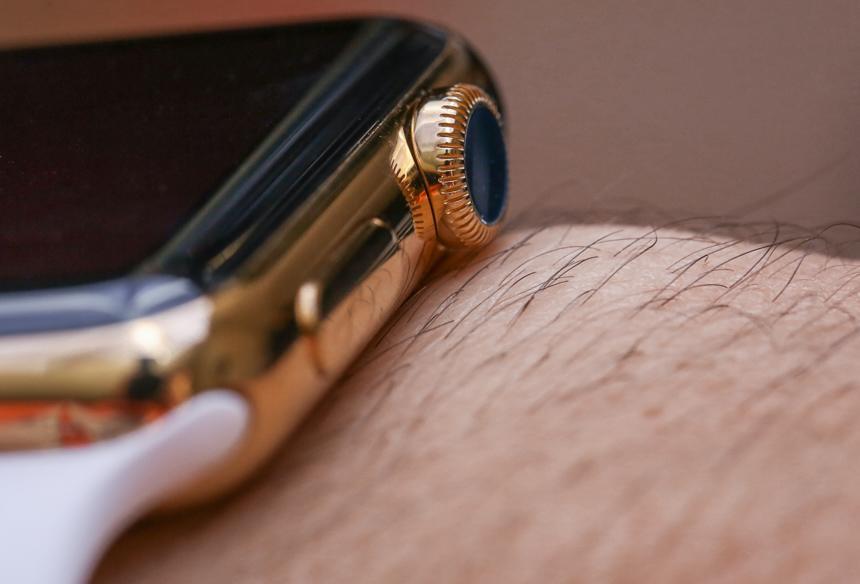
Apple isn’t going to be very financially hurt if they don’t sell as many Apple Watches as they do their other products. If anything, I prefer for the Apple Watch to remain a bit more niche until the smartwatch segment continues to evolve. It is interesting because compared to most Android Wear-based smartwatches, the Apple Watch is a very solid performer. Yet, rather than hearing about how “Android Wear” is a failure, you just hear how companies try and try again to come up with products anyone actually holds on to. In my months of wearing an Apple Watch, I’ve never thought to myself that another product currently on the market could do what the Apple Watch does better.
That doesn’t mean I don’t think of features and functions I want future versions to have, but I am very impressed with where Apple has started. So continuing along those lines, I’d like to connect the Apple Watch Edition to other early wearable technology products – others which were also made in gold.
The ancestor of the connected smartwatch is the calculator watch. Most people know the famous Casio Databank which is what most people imagine when they think of calculator watches. Casio still produces versions of the watch today, and the first Casio Databank watch was released in 1984. While Casio popularized calculator watches in the 1980s, they merely expanded on something that existed before them. Did you know that Hewlett-Packard (HP) made the first calculator watch sold to consumers which included a solid gold version of that watch? In 1977 Hewlett-Packard released the HP-01 with a model in solid gold – and it remains a collector’s item today.
Before the HP-01 gold calculator watch were other solid gold electronic watches meant to celebrate the novelty of new technologies. Companies like Omega offered solid gold LED watches and even Tiffany & Co. got in the game being the exclusive retailer of a gold version of a Pulsar digital LED watch. Pulsar also released a limited edition LED calculator watch around the same time as the HP-01. These are all thematic ancestors of the Apple Watch and indicate that creating gold technology watches is nothing at all new.
Today, people are quick to make fun of things such as early LED watches (which are oddly still popular today in very inexpensive forms). LED watches predated LCD screen watches, and like smartwatches today, had screens which were in an off state unless the wearer activated them. That’s right, those space-age LED watches generations ago suffered from some of the exact same things smartwatches today get complaints about. Things like battery life, utility, expense, and of course, style.
Luxury LED and later early luxury LCD digital watches were an odd phenomenon meant to marry two worlds. Sometimes, I feel as though HP produced a gold calculator watch because they wanted to share with the world how impressed they were with their own product. They wanted people who could afford gold to consider wearing a calculator watch as a lifestyle item. And while adoption of gold digital watches was slow, their steel variants hit a big chord with the scientific and engineering communities.
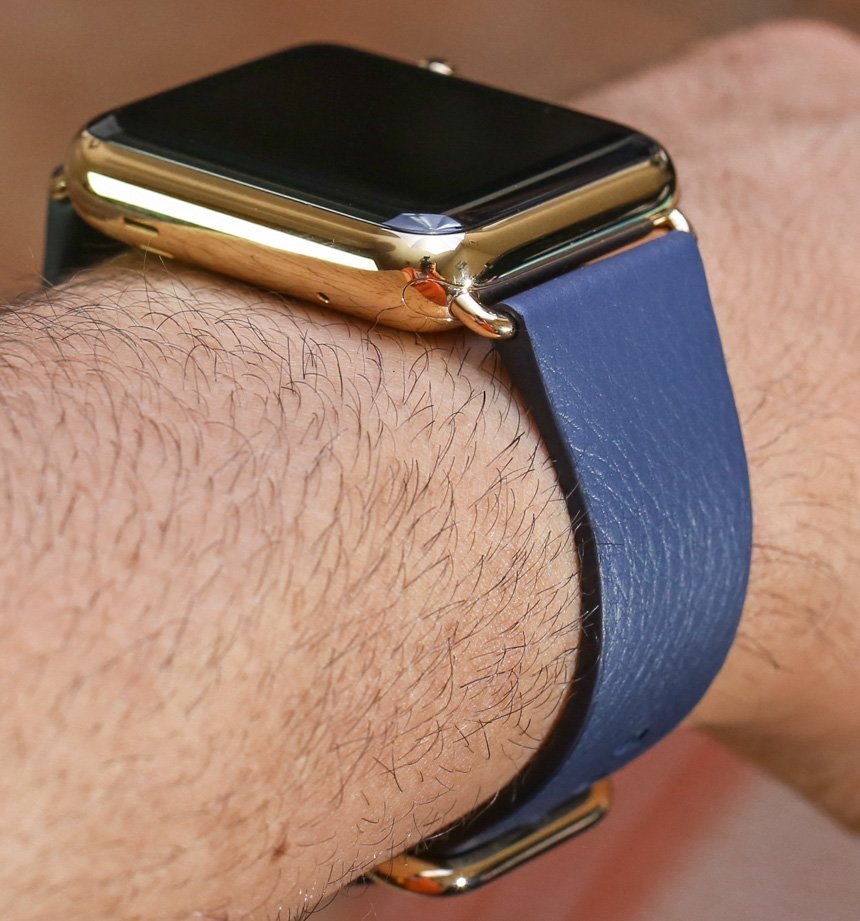
I mention all this to explain that luxury wearable technology products aren’t new – even if luxury tech products are very rare. Just like the watch industry that it was so inspired by, Apple looked to the history of technology wearables and learned that creating luxury versions was not exactly groundbreaking.
I firmly believe that someday not too long from now, wearing a gold smartwatch will not seem at all strange. It won’t be this version of the Apple Watch, and it is difficult to predict whose products will be the most popular, but people in the future will have the option of buying both mainstream and luxury technology wearables. That’s not a wild prediction, that is simply a statistically likely outcome of where we are going based on were we have come from. Smartwatches will get better, and as more and more people adopt them, there will be a universe of choices across all affordability levels. Apple perhaps acted early with a gold version of the Apple Watch – but it was bound to happen sooner or later.

